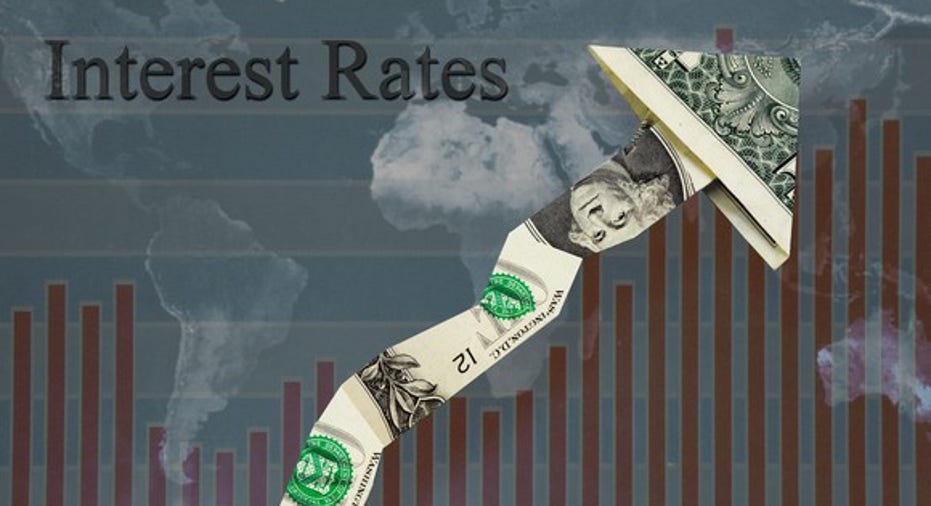The Best Bond Funds to Bet On Right Now

Bond fund investors would typically go down the yield curve to hedge against rising interest rates. Alternatively, exchange traded fund investors can also go on the offensive with a zero-duration or rate-hedged strategy.
Rising interest rates have a negative effect on bond funds. As rates rise, older debt securities with lower rates are less attractive than newer issues that come out with the higher rates. Consequently, the less appealing older bonds will see prices fall in response to the diminished demand in a rising rate environment.
Bond funds, which may hold a collection of debt securities to maintain their target duration strategy, will also see their underlying holdings decline in value. Additionally, the funds may lose out when selling a less valued older debt security for newer issues with higher yields.
Fixed-income investors would traditionally move down the yield curve to hedge against the rate risks - bond funds with a lower duration would help diminish a fixed-income portfolios sensitivity to changes in the interest rate. However, while moving down the yield curve provides a greater level of safety, the lower duration bond funds come with less appealing yields.
Bond traders, though, do not need to sacrifice yield-generation to diminish rate risk. Instead, investors can look to rate-hedged or zero-duration bond ETFs. The relatively new breed of interest rate-hedged, zero duration ETFs hold long-term bonds, but they will simultaneously short Treasuries or Treasury futures contracts to hedge against potential losses if interest rates rise – bond prices have an inverse relationship to interest rates, so rising rates corresponds with falling bond prices.
Unlike traditional fixed-income ETFs, rate-hedged bond ETFs mitigate the negative effects of a rising rate environment through shorting Treasury futures to diminish the overall duration of their diversified bond holdings. Specifically, due to their near-zero durations, the bond funds should show little to no sensitivity to changes in interest rates. Looking further out, these types of hedged-bond ETFs could provide suitable exposure to the fixed-income market in a rising interest environment, especially as the Federal Reserve plans on hiking rates sometime later this year.
For example, the popular investment-grade corporate bond ETF, iShares iBoxx $ Investment Grade Corporate Bond ETF (NYSE:LQD), has a 8.31 year effective duration and a 3.19% 30-day SEC yield, so a 1% increase in interest rates could translate to a 8.31% decline in the ETF’s price.
Alternatively, something like the iShares Interest Rate Hedged Corporate Bond ETF (NYSE:LQDH) holds short positions in interest rate swaps, which provides the rate-hedged ETF with a 0.03 effective duration – a 1% rise in interest rates would translate to a 0.03% decline in the funds price, and LQDH would still offer up a 3.43% 30-day SEC yield.
The near zero-duration target should help an interest-rate-hedged ETF outperform its non-hedged options if rates continue to rise. For instance, since the yield on benchmark 10-year Treasury bonds rose to its current level of around 1.86% from the 1.57% low on February 11, the non-hedged LQD gained 4.2% while the hedged LQDH rose 5.7%. Similarly, the Deutsche X-trackers Investment Grade Bond – Interest Rate Hedged ETF (NYSE:IGIH) increased 5.3% and the ProShares Investment Grade-Interest Rate Hedged ETF (BATS:IGHG) returned 6.6% over the same period.
Investors can also look to rate-hedged high-yield bond ETFs, such as the Deutsche X-trackers High Yield Corporate Bond – Interest Rate Hedged ETF(NYSE:HYIH), iShares Interest Rate Hedged High Yield Bond ETF (NYSE:HYGH), Market Vectors Treasury-Hedged High Yield Bond ETF (NYSE:THHY), ProShares High Yield Interest Rate Hedged ETF (BATS:HYHG) and WisdomTree BofA Merrill Lynch High Yield Bond Zero Duration Fund (NYSE:HYZD).
Additionally, for more aggressive investors, the WisdomTree BofA Merrill Lynch High Yield Bond Negative Duration Fund (NYSE:HYND) takes the process a step further, implementing an overweight short position on Treasuries to push to fund's duration into the negatives. HYND shows a -6.95 year duration and a 5.77% 30-day SEC yield. Due to its negative duration, if interest rates were to rise 1%, the ETF could see a positive return of about 6.95%.
However, potential investors should be aware that these zero- and negative-rate-hedged ETF strategies would only outperform non-hedged funds if interest rates and yields rise. In the event we experience heightened volatility or another rush into safe-haven Treasuries, these rate-hedged ETFs will underperform non-hedged ETFs due to their short Treasury positions. For instance, after the yields on 10-year Treasury notes dipped to 1.86% from 2.28% at the start of the year, LQD gained 5.3% while LQDH was only up 0.3%.
This article was provided by our partners at etftrends.com.